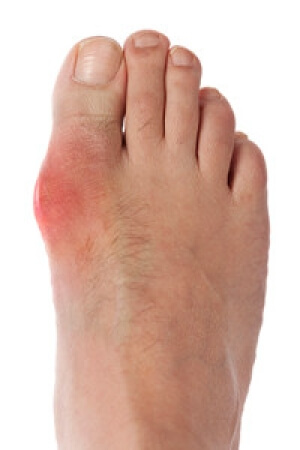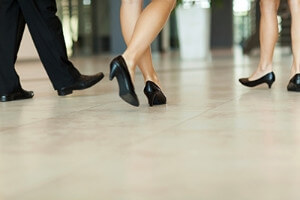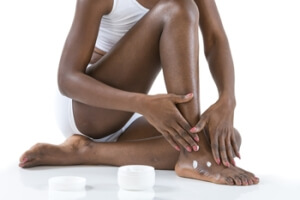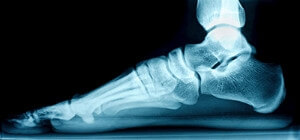
What to Do to Keep Your Child’s Feet Healthy
Being a parent involves caring for your child in every way you can. You make sure they are eating the right food, being nice to others, and staying out of any trouble. However, it is also important that you are watchful of their health, more specifically their foot health. Maintaining good foot health in childhood is important in preventing later conditions in life from happening. As children continue to develop, their feet require different techniques of care. Here are some various ways in which you can help your child’s feet stay healthy.
A baby needs a lot of care and attention overall, but the importance of their feet should never be forgotten. Before a baby turns one, their feet change and develop greatly. It is important that during this time, a mother avoids putting tight socks on their child. She should also encourage movement of their feet so the baby can begin to feel more comfortable using them.
As a baby enters the toddler years of his or her life, they are begin to walk around. When your baby begins to take those first steps, it is crucial that they are wearing protective shoes on their feet. As a mother that is observant of your child’s feet, you may notice changes in them. This is completely normal as the feet are becoming susceptible to the activity of walking. It is normal for a toddler to be a bit unsteady or to “walk funny” at first.
When your child grows out of their toddler years, it is important that you begin to show him or her how to care for their feet on their own. Practice with your child proper hygiene in order to prevent foot fungus or infection. Since children are constantly on the move, it is crucial to be cautious of any accidents or injuries that might occur. If an injury occurs, it is advised that you take your child to be examined by a doctor immediately. Since your child is still growing, particular injuries can shift the way in which a bone or other important part of the foot is developing.
Babies and kids are always changing and growing. Your job as a parent is to make sure they stay healthy and making sure they are properly maintained. This involves proper foot care and making sure the feet stay healthy. Following this guide, your child can live a long and happy life.
Relief for Your Bunions
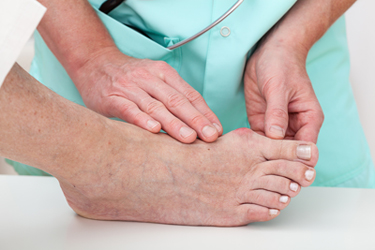 Bunions are a common condition and are easy to spot. If there is a protrusion below your big toe or pinky toe, then it is most likely a bunion. Bunions can cause discomfort or pain, especially in the wrong shoes. Thankfully, there are a few simple ways to relieve some of the annoyances caused by bunions. Wearing a toe spacer can help realign your bones, but they should only be worn in moderation. Toe spacers act as braces for your toes but wearing them for too long can cause painful leg cramps. Changing your footwear can also impact your bunions. Shoes that are wider around the toes give bunions space and can relieve some of the pain associated with narrow toed shoes. Bunion massages may also help alleviate some pain. Bunions have trigger points that cause muscles to shorten and massaging the area can help to stretch the surrounding muscles. If you have a bunion and would like to learn more about alleviating uncomfortable symptoms, it is recommended you speak with a podiatrist to learn about the right treatment for you.
Bunions are a common condition and are easy to spot. If there is a protrusion below your big toe or pinky toe, then it is most likely a bunion. Bunions can cause discomfort or pain, especially in the wrong shoes. Thankfully, there are a few simple ways to relieve some of the annoyances caused by bunions. Wearing a toe spacer can help realign your bones, but they should only be worn in moderation. Toe spacers act as braces for your toes but wearing them for too long can cause painful leg cramps. Changing your footwear can also impact your bunions. Shoes that are wider around the toes give bunions space and can relieve some of the pain associated with narrow toed shoes. Bunion massages may also help alleviate some pain. Bunions have trigger points that cause muscles to shorten and massaging the area can help to stretch the surrounding muscles. If you have a bunion and would like to learn more about alleviating uncomfortable symptoms, it is recommended you speak with a podiatrist to learn about the right treatment for you.
If you are suffering from bunions, contact one of our podiatrists of Sayville Foot Care. Our doctors can provide the care you need to keep you pain-free and on your feet.
What Is a Bunion?
A bunion is formed of swollen tissue or an enlargement of boney growth, usually located at the base joint of the toe that connects to the foot. The swelling occurs due to the bones in the big toe shifting inward, which impacts the other toes of the foot. This causes the area around the base of the big toe to become inflamed and painful.
Why Do Bunions Form?
Genetics – Susceptibility to bunions are often hereditary
Stress on the feet – Poorly fitted and uncomfortable footwear that places stress on feet, such as heels, can worsen existing bunions
How Are Bunions Diagnosed?
Doctors often perform two tests – blood tests and x-rays – when trying to diagnose bunions, especially in the early stages of development. Blood tests help determine if the foot pain is being caused by something else, such as arthritis, while x-rays provide a clear picture of your bone structure to your doctor.
How Are Bunions Treated?
- Refrain from wearing heels or similar shoes that cause discomfort
- Select wider shoes that can provide more comfort and reduce pain
- Anti-inflammatory and pain management drugs
- Orthotics or foot inserts
- Surgery
If you have any questions, please feel free to contact our office located in Sayville, NY . We offer the newest diagnostic and treatment technologies for all your foot care needs.
Bunions
A bunion is a bump that forms at the base of the big toe. Bunions form when the big toe pushes against the next toe, which forces the big toe joint to get bigger and stick out. As a result, the skin over the bunion may start to appear red and it may feel sore.
There are risk factors that can increase your chances of developing bunions. People who wear high heels or ill-fitting shoes are more likely to develop them, in addition to those who have a genetic history of bunions or have rheumatoid arthritis.
The most obvious way to tell if you have a bunion is to look for the big toe pushing up against the toe next to it. Bunions produce a large protrusion at the base of the big toe and may or may not cause pain. Other symptoms are redness, swelling, and restricted movement of the big toe if you have arthritis.
Nonsurgical methods are frequently used to treat bunions that aren’t severe. Some methods of nonsurgical treatment are orthotics, icing and resting the foot, taping the foot, and pain medication. Surgery is usually only required in extreme cases. However, if surgery is needed, some procedures may involve removing the swollen tissue from around the big toe joint, straightening the big toe by removing part of the bone, or joining the bones of your affected joint permanently.
Your podiatrist will diagnose your bunion by doing a thorough examination of your foot. He or she may also conduct an x-ray to determine the cause of the bunion and its severity.
How Your Diet Could Be Affecting Your Gout
 Gout is a form of arthritis, that involves bouts of pain, swelling, redness, and tenderness in the joints. It can affect any joint in the body, but it is most commonly found in the joint at the base of the big toe. The symptoms usually occur sporadically, but flare ups will come unexpectedly. The pain can last anywhere from hours to weeks after the initial flare up. Gout happens when uric acid builds up in the blood, because there is too much for the body to properly dispose of it. Uric acids are a byproduct of purines after they are broken down. Therefore, avoiding purine heavy foods could help avoid or lessen painful flare ups of gout. Some high-purine foods to avoid include: any alcohol, anchovies, herring, cod, mussels, bacon, turkey, veal, venison, organ meats, trout, meat-based gravies and sauces, and yeast extract supplements. If you would like any additional information on how your diet might affect your gout, then it is recommended that you speak with a podiatrist.
Gout is a form of arthritis, that involves bouts of pain, swelling, redness, and tenderness in the joints. It can affect any joint in the body, but it is most commonly found in the joint at the base of the big toe. The symptoms usually occur sporadically, but flare ups will come unexpectedly. The pain can last anywhere from hours to weeks after the initial flare up. Gout happens when uric acid builds up in the blood, because there is too much for the body to properly dispose of it. Uric acids are a byproduct of purines after they are broken down. Therefore, avoiding purine heavy foods could help avoid or lessen painful flare ups of gout. Some high-purine foods to avoid include: any alcohol, anchovies, herring, cod, mussels, bacon, turkey, veal, venison, organ meats, trout, meat-based gravies and sauces, and yeast extract supplements. If you would like any additional information on how your diet might affect your gout, then it is recommended that you speak with a podiatrist.
Gout is a painful condition that can be treated. If you are seeking treatment, contact one of our podiatrists from Sayville Foot Care. Our doctors will treat your foot and ankle needs.
What Is Gout?
Gout is a form of arthritis that is characterized by sudden, severe attacks of pain, redness, and tenderness in the joints. The condition usually affects the joint at the base of the big toe. A gout attack can occur at any random time, such as the middle of the night while you are asleep.
Symptoms
- Intense Joint Pain - Usually around the large joint of your big toe, and it most severe within the first four to twelve hours
- Lingering Discomfort - Joint discomfort may last from a few days to a few weeks
- Inflammation and Redness -Affected joints may become swollen, tender, warm and red
- Limited Range of Motion - May experience a decrease in joint mobility
Risk Factors
- Genetics - If family members have gout, you’re more likely to have it
- Medications - Diuretic medications can raise uric acid levels
- Gender/Age - Gout is more common in men until the age of 60. It is believed that estrogen protects women until that point
- Diet - Eating red meat and shellfish increases your risk
- Alcohol - Having more than two alcoholic drinks per day increases your risk
- Obesity - Obese people are at a higher risk for gout
Prior to visiting your podiatrist to receive treatment for gout, there are a few things you should do beforehand. If you have gout you should write down your symptoms--including when they started and how often you experience them, important medical information you may have, and any questions you may have. Writing down these three things will help your podiatrist in assessing your specific situation so that he or she may provide the best route of treatment for you.
If you have any questions, please feel free to contact our office located in Sayville, NY . We offer the newest diagnostic and treatment technologies for all your foot care needs.
Gout
Gout is a form of arthritis that is caused by a buildup of uric acid crystals in the joints. This considered to be one of the most frequently recorded medical illnesses throughout history. Gout occurrences in the US have risen within the past twenty years and the condition now affects 8.3 million people which is 4% of all Americans. Researchers have found that gout affects men more than women and African-American men more than white men.
Symptoms of gout are warmth, swelling, discoloration, and tenderness in the affected joint area. The small joint on the big toe is the most common place for a gout attack to occur.
People who are obese, gain weight excessively, drink alcohol heavily, have high blood pressure, or have abnormal kidney function are more likely to develop gout. Furthermore, certain drugs and diseases are likely to increase levels of uric acid in the joints which eventually leads to gout. You are also more likely to develop gout if you eat a lot of meat and fish.
Many who experience gout attacks will experience repeated attacks over the years. Some people who have gout symptoms, may never have them again, but others may experience them several times a year. If you have gout symptoms throughout the year, you may have recurrent gout. Those who have gout should also be careful about their urate crystals collecting in their urinary tract, because this may lead to kidney stones.
Diagnosis for gout is done by checking the level of uric acid in the joints and blood. Your podiatrist may also prescribe medicine to reduce uric acid buildup in the blood, which will help prevent any gout attacks.
To treat gout, your podiatrist may also prescribe you Anti-inflammatory medication (NSAIDs) which will relieve the pain and swelling of a gout episode and it can also shorten a gout attack. Maintaining a healthy diet is also a proven method to prevent gout attacks.
Protecting Your Feet While Working
 Many people are involved in jobs where standing is mandatory for most of the day. There may be methods that can alleviate any foot pain, which may be present while working, including using shoe inserts, standing on stress mats instead of hard flooring, or wearing compression stockings. Additionally, it may be beneficial to change positions frequently during the day, which may include sitting for short periods at a time and performing gentle stretches. Wearing shoes that are comfortable and fit well may aid in diminishing aches and pains the feet may endure. Research has shown it may be best to try shoes on after the work day is completed, and this may allow for any swelling that may be present. Properly taking care of your feet while completing the work day may help to prevent painful foot conditions, including plantar fasciitis and Achilles tendinitis. If you would like additional information about the importance of protecting your feet while working, please consult with a podiatrist.
Many people are involved in jobs where standing is mandatory for most of the day. There may be methods that can alleviate any foot pain, which may be present while working, including using shoe inserts, standing on stress mats instead of hard flooring, or wearing compression stockings. Additionally, it may be beneficial to change positions frequently during the day, which may include sitting for short periods at a time and performing gentle stretches. Wearing shoes that are comfortable and fit well may aid in diminishing aches and pains the feet may endure. Research has shown it may be best to try shoes on after the work day is completed, and this may allow for any swelling that may be present. Properly taking care of your feet while completing the work day may help to prevent painful foot conditions, including plantar fasciitis and Achilles tendinitis. If you would like additional information about the importance of protecting your feet while working, please consult with a podiatrist.
While working on the feet, it is important to take the proper care of them. For more information about working on your feet, contact one of our podiatrists from Sayville Foot Care. Our doctors will treat your foot and ankle needs.
Working on Your Feet
Standing on your feet for long periods of time can cause stress and pain in your feet. Your whole body may experience change in terms of posture, back pain, bunions, callouses and or plantar warts. There are ways to avoid these conditions with proper foot care, smart choices and correct posture.
Positive Changes
Negative heeled shoe – Choosing this shoe type places the heel slightly lower than the ball of the foot. These are great for overall foot health. Find shoes that fit you correctly.
Go barefoot – Our feet were not designed to be enclosed for all hours of the day. Try to periodically expose your feet to air.
Eliminate Pain
Foot Exercises – Performing simple exercises, incorporating yoga and doing stretches are beneficial. This will allow increased blood flow to the area and muscles of the foot.
Achilles tendon – Stretching the foot out flat on the floor will relax the calf muscles and tendon. These exercises can be performed almost anywhere. Make sure you add these exercises to your daily regimen.
With a little bit of this information and knowing more about foot health, you will notice changes. Foot stretches and proper footwear will help with pain and prevent further issues.
If you have any questions please feel free to contact our office located in Sayville, NY . We offer the newest diagnostic and treatment technologies for all your foot and ankle needs.
Working on Your Feet
Foot care is important regardless of your profession, but those who work on their feet must pay special attention. Bunions, calluses, blisters, and plantar warts are just a few of the many conditions that can arise after standing all day. While painful at their worst, these conditions can easily be avoided with the right foot care. This includes both appropriate footwear and proper posture—important elements that affect the health of your feet.
Choosing appropriate footwear means choosing a shoe that has a negative heel. This means that the heel is slightly lower than the ball of your foot, which places less of a strain. If you have a profession that requires you to be on your feet all day, investing in a pair of high-quality shoes is pertinent. High-quality shoes can be purchased from a respected manufacturer that emphasizes foot care and foot health.
Despite the regularity of wearing shoes, the feet are naturally not designed to be enclosed. Regular “barefoot” time for your feet can be beneficial for foot health. Among other methods, allowing your feet to breathe can help alleviate the pain and pressure your feet may be experiencing from being on your feet all day.
Simple foot exercises and yoga positions can help improve both the health and function of your feet. Active foot exercises that create movement will stimulate your foot’s blood flow and circulation, and yoga positions that place your feet flat onto the floor will stretch out their muscles. Yoga is particularly beneficial for your Achilles tendon and calf muscles, which are areas that can become especially problematic if not taken care of. Foot exercises and yoga positions can be easily performed every day at virtually any location and any time; whether it is at the office, at the gym, or at home right before you go to bed. Simple stretching can increase your foot health by miles.
The foot pain you experience after lengthy hours working on your feet may seem inevitable and unavoidable; in reality, however, that is not the case. Wearing proper footwear and performing simple foot exercises and stretches can help ease foot pain and allow you to truly avoid frustrating foot problems.
Your feet can easily be kept healthy with some education and a little effort. Pain that begins at the feet can eventually affect the whole body. Begin taking care of your feet now!
Types of Shoes That May Cause Cracked Heels
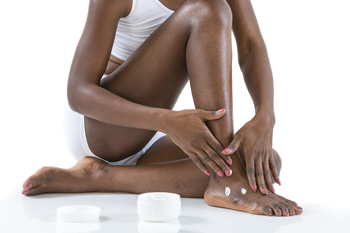 The condition that is known as cracked heels may cause pain and discomfort if it is not treated promptly. It may occur more frequently during the summer months when open-back shoes are worn and may happen as a result of the inadequate support these types of shoes may offer. There are several methods to treat this unsightly foot condition, and these may include washing and thoroughly drying the feet daily, followed by utilizing a good moisturizer, which may aid in keeping the skin soft. Some patients find it helpful to wear cotton socks while sleeping, and this may be preceded by applying petroleum jelly to the affected area. Additionally, using a pumice stone or exfoliating foot cream may be successful in managing cracked heels. If you are afflicted with this ailment and would like additional information about how to prevent and treat cracked heels, it is suggested to speak with a podiatrist.
The condition that is known as cracked heels may cause pain and discomfort if it is not treated promptly. It may occur more frequently during the summer months when open-back shoes are worn and may happen as a result of the inadequate support these types of shoes may offer. There are several methods to treat this unsightly foot condition, and these may include washing and thoroughly drying the feet daily, followed by utilizing a good moisturizer, which may aid in keeping the skin soft. Some patients find it helpful to wear cotton socks while sleeping, and this may be preceded by applying petroleum jelly to the affected area. Additionally, using a pumice stone or exfoliating foot cream may be successful in managing cracked heels. If you are afflicted with this ailment and would like additional information about how to prevent and treat cracked heels, it is suggested to speak with a podiatrist.
If the skin on your feet starts to crack, you may want to see a podiatrist to find treatment. If you have any concerns, contact one of our podiatrists from Sayville Foot Care. Our doctors can provide the care you need to keep you pain-free and on your feet.
Cracked Heels
It is important to moisturize your cracked heels in order to prevent pain, bleeding, and infection. The reason cracked heels form is because the skin on the foot is too dry to support the immense pressure placed on them. When the foot expands, the dry skin on the foot begins to split.
Ways to Help Heal Them
- Invest in a good foot cream
- Try Using Petroleum Jelly
- Ease up on Soaps
- Drink Plenty of Water
Ways to Prevent Cracked Heels
- Moisturize After Showering
- Skip a Shower
- Keep Shower Water Lukewarm
- Don’t Scrub Your Feet
If you are unsure how to proceed in treating cracked heels, seek guidance from a podiatrist. Your doctor will help you with any questions or information you may need.
If you have any questions, please feel free to contact our office located in Sayville, NY . We offer the newest diagnostic and treatment technologies for all your foot care needs.
Solutions for Cracked Heels
Cracked heels may make you want to think twice about showing off your feet in warmer weather. However, cracked heels may be harmful to more than just the appearance of your feet. If deep fissures and cracks develop in your heels, they may make walking and standing painful for you. Additionally, these openings make way for germs to enter through your skin and cause infection.
There are several different causes of cracked heels. One of the most common reasons for this ailment is dry skin. This problem may make your keeps feel rough tight and itchy. Dry skin may be caused by cold air, extremely hot water, harsh soaps, and aging. Skin disorders such as eczema and psoriasis may eventually lead to dry skin. In some cases, complications may arise from cracked heels. Some of these complications are a loss of feeling in the heel, cellulitis, or a diabetic foot ulcer.
There are ways you can try to prevent getting cracked heels. One of the best ways to do so is to avoid wearing flip flops and sandals because these shoes increase your risk of drying out your feet. You should also avoid wearing shoes with a tall skinny heel, because these shoes cause your heel to expand sideways. At night, you should slather on a thick moisturizing cream on your feet and then cover them in socks to keep your feet moisturized overnight. Drinking water to stay hydrated is also a good way to ensure that your skin doesn’t become dry.
If you suffer from a severe case of cracked feet, you should make an appointment with your podiatrist to see what treatment methods are best for you.
Are Flat Feet Hereditary?
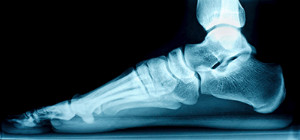 The medical condition that is referred to as flat feet is a result of the absence of the arch that feet generally have. This ailment is also known as fallen arches and is noticeable when the feet lie flat without a gap between the foot and the floor. Research has shown that genetics may play a significant role in the development of flat feet. Additionally, other causes may include arthritis or a ruptured tendon as a result of a possible injury. Patients who have this condition may observe pain or stiffness that may be present in the inner side of the ankle or where the arch would generally be. There may be effective treatment methods for this ailment, including wearing shoes that offer adequate support, in addition to possibly wearing orthotics. If you are experiencing pain and discomfort as a result of having flat feet, please speak to a podiatrist who can properly address any concerns you may have.
The medical condition that is referred to as flat feet is a result of the absence of the arch that feet generally have. This ailment is also known as fallen arches and is noticeable when the feet lie flat without a gap between the foot and the floor. Research has shown that genetics may play a significant role in the development of flat feet. Additionally, other causes may include arthritis or a ruptured tendon as a result of a possible injury. Patients who have this condition may observe pain or stiffness that may be present in the inner side of the ankle or where the arch would generally be. There may be effective treatment methods for this ailment, including wearing shoes that offer adequate support, in addition to possibly wearing orthotics. If you are experiencing pain and discomfort as a result of having flat feet, please speak to a podiatrist who can properly address any concerns you may have.
Flatfoot is a condition many people suffer from. If you have flat feet, contact one of our podiatrists from Sayville Foot Care. Our doctors will treat your foot and ankle needs.
What Are Flat Feet?
Flatfoot is a condition in which the arch of the foot is depressed and the sole of the foot is almost completely in contact with the ground. About 20-30% of the population generally has flat feet because their arches never formed during growth.
Conditions & Problems:
Having flat feet makes it difficult to run or walk because of the stress placed on the ankles.
Alignment – The general alignment of your legs can be disrupted, because the ankles move inward which can cause major discomfort.
Knees – If you have complications with your knees, flat feet can be a contributor to arthritis in that area.
Symptoms
- Pain around the heel or arch area
- Trouble standing on the tip toe
- Swelling around the inside of the ankle
- Flat look to one or both feet
- Having your shoes feel uneven when worn
Treatment
If you are experiencing pain and stress on the foot you may weaken the posterior tibial tendon, which runs around the inside of the ankle.
If you have any questions please feel free to contact our office located in Sayville, NY . We offer the newest diagnostic and treatment technologies for all your foot and ankle needs.

